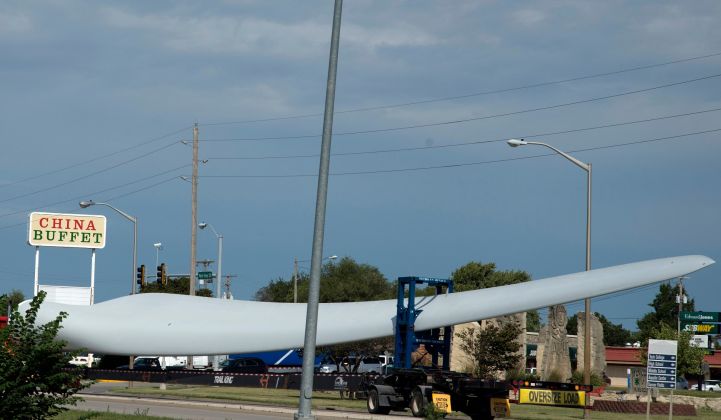Evergy has become the latest utility to pledge to long-term carbon cuts even though the states it serves, Kansas and Missouri, aren’t demanding them.
On Friday, the 1.6-million-customer utility, formed last year by the merger of Westar Energy and Kansas City Power & Light parent company Great Plains Energy, announced plans to cut carbon emission by 80 percent from 2005 levels by 2050. While that’s not as aggressive as the zero-carbon goals being followed by utilities in states such as California, Hawaii and New York, it’s in line with meeting the terms of the Paris climate accord, the utility said.
Since 2005, Evergy has reduced the share of coal-fired power in its 6.2-gigawatt generation fleet from 52 percent to 40 percent, while reducing natural gas and oil from 38 percent to 26 percent. At the same time, it increased its share of renewables from less than 1 percent to roughly 27 percent, almost entirely wind power, with nearly 3.9 gigawatts of nameplate capacity as of 2020.
These changes have already gotten Evergy to a 40 percent reduction in emissions from 2005 levels.
To get to 80 percent, the company plans to retire all coal plants in the 2040-2050 timeframe, except its Iatan 2 plant in Missouri, the newest and cleanest in its fleet. It will also keep Wolf Creek Nuclear Station, which provides about 7 percent of its 2020 generation, until its license expires in 2045, and it reserves the right to build a “small amount of natural-gas generation” if needed.
But Evergy plans to make up for most of its closing coal-fired generation with “significant investments in renewable energy and energy efficiency,” including an immediate plan to add another 660 megawatts of wind power to its portfolio.
On Monday, Evergy signed a power-purchase agreement with AEP Renewables for 128 megawatts of wind power from its Flat Ridge 3 project in Kansas, the first project on the list. The remaining 660 megawatts will come from the 199-megawatt Expedition Wind project being developed by National Renewable Solutions in Marion County; a 155-megawatt purchase from Apex Clean Energy’s 193-megawatt Jayhawk Wind project; and its 178-megawatt purchase from NextEra Resources’ Ponderosa Wind project in Oklahoma.
Kansas is a leading market for wind energy among U.S. states, with more than 6 gigawatts installed, according to the latest figures from the American Wind Energy Association.
Above and beyond states' demands
Evergy’s commitments are significant, given that they come from a utility that serves states that haven’t set carbon-reduction mandates. Kansas’ renewable portfolio standard calls for only 20 percent renewables from 2020 onward, a level the state had already reached with wind power in 2013. Missouri’s RPS demands only 15 percent renewables by 2021.
Still, Evergy hasn’t moved as aggressively into harnessing the region’s rich wind power resource compared to neighboring utilities. Berkshire Hathaway’s MidAmerican Energy in Iowa, for example, served nearly half of its customers’ power needs in 2018 from its wind fleet of 6,500 megawatts; it expects to meet 100 percent of its demand on an annual basis with wind power by the end of this year.
Similarly, Xcel Energy, which serves about 3.3 million electric and 1.8 million natural-gas customers in seven states, mostly in Minnesota and Colorado, plans to close its last two coal-fired power plants in Minnesota by 2030, a decade earlier than scheduled, and keep its nuclear power plants running through at least 2040, to reach its goal of 100 percent carbon-free electricity by 2050.
Duke Energy, which serves 8 million people across six states and operates a 51-gigawatt generation fleet, pledged this fall to reach zero carbon by 2050, albeit with a continued reliance on natural gas over the next decade. And Arizona utility APS has pledged to be carbon-free by 2050 last month despite the lack of state policies to support this transition.
***
Join Wood Mackenzie's upcoming wind webinar, Winds of change in onshore wind O&M - a look into 2020s, on February 20th, at 11:00am GMT.




